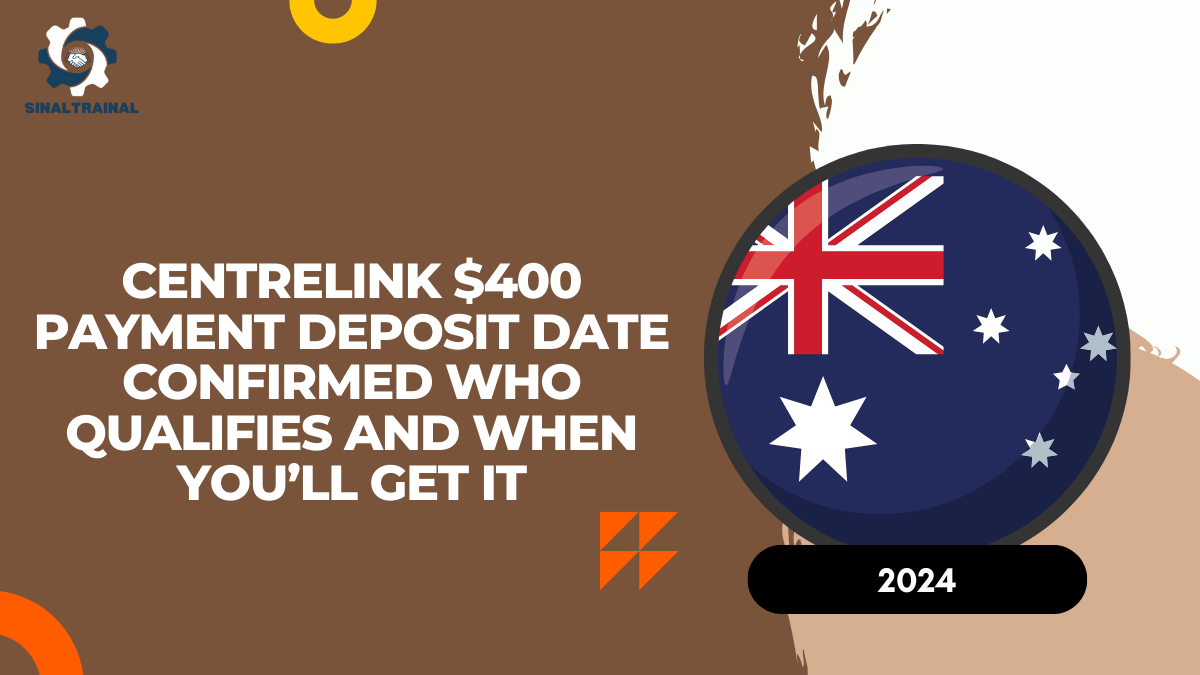Here’s the latest news about the Centrelink $400 payment. The Australian government has confirmed the deposit date for eligible beneficiaries under the Centrelink program. This payment is intended to provide financial support to individuals facing hardships, such as job seekers, people with disabilities, retirees, and other vulnerable groups. In this article, we’ll go over the payment dates, eligibility criteria, and other vital details you need to know.

Centrelink $400 Payment: Deposit Date and Purpose
The $400 Centrelink payment is a much-needed financial relief for retirees, unemployed individuals, caregivers, those with disabilities, and others who need support. The aim of this payment is to help reduce the financial strain on these individuals, particularly in covering essential costs like medical expenses, utility bills, and day-to-day living costs.
The payment will be directly deposited into the bank accounts of those who are eligible. Based on the latest updates, the deposit is expected to be made on August 21, 2024. However, for individuals who were expecting this payment earlier in March but did not receive it, their fee should be deposited by October 2024.
It’s essential to stay updated by checking official government resources to ensure you’re aware of any changes or further confirmations.
Centrelink $400 Payment Eligibility Checklist
To qualify for the $400 Centrelink payment, there are specific eligibility requirements that must be met. These include:
- Australian Residency or Citizenship: Only individuals who are Australian citizens or permanent residents are eligible to receive this payment.
- Target Beneficiaries: This payment is specifically aimed at specific groups, including:
- Job seekers
- People with disabilities
- Caregivers
- Retired individuals
- Low-income families
- Income Threshold: Your annual income must be below a certain limit set by the government to qualify. If you exceed this income level, you may not be eligible for the payment.
- Age Requirement: In addition to income limits, there may be age requirements depending on the category of benefits you’re receiving.
For a detailed and up-to-date breakdown of eligibility criteria, it’s recommended to visit the official Service Australia website. Keep in mind that the eligibility rules may change, so it’s wise to regularly check the official website for updates to ensure you don’t miss out on the payment.
How to Claim the Centrelink $400 Payment
If you meet the eligibility criteria, claiming the Centrelink $400 payment is a straightforward process. Here’s a step-by-step guide to help you claim the payment:
- Link Your MyGov Account to Centrelink: If you don’t already have a MyGov account connected to Centrelink, this is your first step.
- Go to the Payment and Claim Section: On the Centrelink portal, navigate to the “Payments and Claims” section to begin the process.
- Choose Manage or Advance Payment: Click on the option to manage payments or apply for an advance payment.
- Complete the Application Form: Ensure all details are entered accurately, including your personal and financial information.
- Select the Relevant Benefit: From the drop-down menu, choose the type of benefit you are applying for.
- Submit Required Documents: Along with the application, you will need to upload any necessary supporting documents.
Once you’ve submitted the application, Centrelink will review the details. If everything is in order and you meet the requirements, you will be notified once your claim has been approved. The $400 payment will then be deposited within the designated timeframe.
Payment Schedules and Key Facts
When you receive your $400 payment, it may depend on the type of benefit you are receiving and your regular payment schedule. Centrelink payments are usually issued on specific dates, but these can be impacted by weekends and public holidays. For example, if the payment date falls on a holiday, it may be processed earlier.
To avoid confusion or missed payments, it’s a good idea to regularly check the Service Australia website or use the Express Plus Centrelink mobile app. These platforms provide the most accurate and current information regarding payment schedules. You can also contact Centrelink customer service if you have any specific questions or concerns about your payment.
Why Is This Payment Important?
In recent months, many Australians have faced financial hardship due to the rising cost of living. With inflation affecting everything from groceries to energy bills, people across the country are struggling to make ends meet. In response, the Australian government has introduced or expanded several social benefit programs to provide financial relief.
The Centrelink $400 payment is one such initiative. It aims to help individuals and families manage essential living expenses, such as healthcare costs, food, and utilities. Centrelink offers payments twice a year to help beneficiaries cope with economic challenges.
Stay Updated on Your Payments
Given the ongoing changes in government assistance programs, it’s essential to stay informed about any updates or adjustments. The best way to do this is to regularly check official government websites like Service Australia or the Centrelink portal. You can also follow government announcements on social media platforms for real-time updates.
By keeping an eye on these resources, you can ensure that you don’t miss out on any crucial payment deadlines or eligibility changes. Make sure to visit these sites frequently to stay informed on future Centrelink payments and other social benefit programs.
Conclusion
With the cost of living on the rise, the Centrelink $400 payment offers valuable financial support for eligible Australians. Whether you are retired, unemployed, disabled, or a caregiver, this payment can help reduce some of the financial stress you may be experiencing. To ensure you receive your payment on time, make sure to meet all eligibility requirements, submit your claim correctly, and stay informed about any updates from the government.
Click here to know more.

Arvind, an exam specialist with a passion for education, writes comprehensive articles on exam results and admit cards. His expertise ensures students receive reliable information and useful tips to excel in their exams.